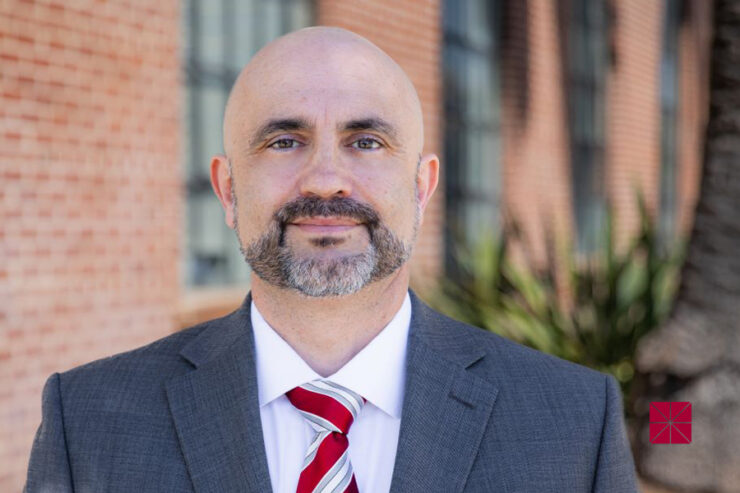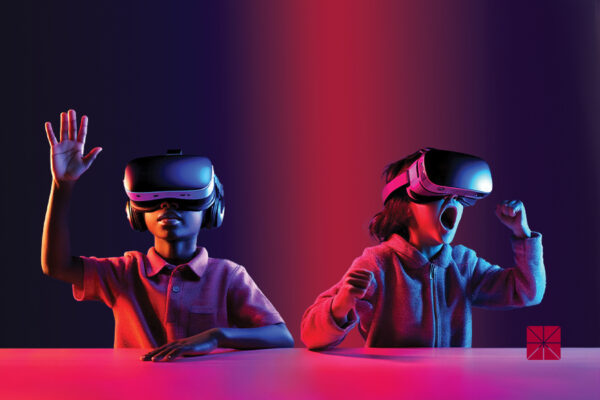Shawn Farrokhi is already working to enhance Chapman University’s physical therapy department with his deep experience working with military service members and running enthusiasts.
Farrokhi took the helm of the Doctor of Physical Therapy (DPT) program, one of the oldest accredited programs of its kind in the nation, in July 2023. He holds a DPT and a Ph.D. in biomechanics, both from the University of Southern California. Before coming to Chapman, he taught at the University of Pittsburgh and conducted research for the U.S. Department of Defense on military service members experiencing extremity trauma, amputation and musculoskeletal pain.
Farrokhi recently sat down to talk about his professional experience and vision for Chapman’s physical therapy program. The interview has been edited for clarity and length.
Q: When and how did your interest in physical therapy start and where has your career taken you?
A: My interest really started in high school. This was the early ’90s. My best friend and soccer teammate injured his knee and he had to have surgery. So, as any good teammate would do, I would drive him to his physical therapy appointments. That was my first introduction to physical therapy — just being with him in the gym as he was receiving rehabilitation, and I absolutely fell in love with the profession. It was such an active and one-on-one type of a profession where you could help individuals and see the impact of what you do directly.
As my education continued, I wanted to be a researcher and a clinician, and neither one of those aspects was more important than the other. As an adjunct faculty member at USC, the teaching aspect became another pillar of what I wanted to do in terms of a long-term career. One of the unique aspects of my Ph.D. training was that I decided to stay in a clinic. The desire to ask the right questions and stay clinically relevant really kept me in the clinic, seeing patients on a part-time basis.
Q: How and why did you begin studying service members and veterans, people with limb loss and runners?
A: I was at the University of Pittsburgh for about five years, and a really unique opportunity became available to join the military as a civilian to do research for the Department of Defense at Naval Medical Center San Diego, which is where I’m from. So I made a hard decision to leave the University of Pittsburgh and take this position with the Department of Defense, purely because my research would have the type of impact that I wanted to have in people’s lives.
The organization that I ended up working with was called the Department of Defense-Department of Veterans Affairs Extremity, Trauma and Amputation Center of Excellence. What I really liked was that all the scientists were embedded in hospitals where the patients were, so they’re working really closely with patients and clinicians, and they’re performing research to improve how care is provided.
Q: What programs and outcomes has your research led to?
A: I created a program with my team to help service members who have musculoskeletal pain to be able to go back to running.
Running is a fundamental aspect of military performance and job duties, so not being able to run is really detrimental for longevity of service members within their service. So getting individuals back to running is really important.
The runner retraining program that we created was a vision that I had as a Ph.D. student. If someone has knee or ankle pain, for instance, can we change their behavior in terms of how they move to reduce the loads on their knees or ankles. It changes the individual’s behavior as opposed to just focusing our attention to where the pain is.
Service members come in for six to eight sessions within two weeks and we’re able to completely change the way they run and reduce their pain and get them back to running.
We are creating a similar type of a program here at Chapman University that should be up and running in the near future. I’m really looking forward to continuing that line of research here.
One of my areas of research currently is older runners or master runners. These are individuals who are over 35 years of age who continue to run and choose to run for various reasons, whether that’s for health benefits or whether they still want to stay competitive and win races. I’m really interested in how individuals’ bodies respond to the demands of running as they age. If we have a better understanding of how injuries happen and what some of the risk factors are, we can devise better rehabilitation and preventative programs for those individuals.
The current study is going to really focus on this patient population to see how we can reduce their pain. And if they do have pain, put them through the run retaining program that we’ve created to see if we can continue to keep them running and active and remedy the limitations of the demands that they put on their bodies.
Q: What brought you to Chapman?
A: Throughout my career I’ve pursued these three pillars: research, clinical care and teaching. With my previous job, there was no teaching component. I really missed being involved in academia, especially in physical therapy education. So when this opportunity became available to be involved with Chapman’s physical therapy program and have an impact on the education that our students receive, that was an opportunity I could not pass up.
When I came here, one of the first things that really caught my attention is that we have an absolutely stellar group of faculty members who provide superb education for our students. To this end, the outcomes from our program consistently have been up there with the top 10 programs in the nation. We’ve been doing a great job over the years.
We also have one of the most diverse physical therapy programs in the nation. Given that diversity, we do need mechanisms in place to support our students and their needs. So we’re working with our faculty to develop student-led organizations or teams that could help provide more information about potential issues with diversity, equity and inclusion in physical therapy, and specifically for students and figuring out how we can provide them with the support they need to be successful in their careers.
Q: How do you see Chapman contributing to the health care industry in Southern California by educating physical therapists?
A: Physical therapy has been at the forefront of those discussions in terms of supporting our community partners’ needs and advancing health care.
Those discussions by themselves have been really fruitful in allowing us to set our vision and goals that would be consistent with the needs of our community partners. That gives us a target to focus on in terms of the quality and the type of education that our students should receive to be able to become leaders in the profession. There is an increasing need for autonomous and competent physical therapists to contribute to the health care industry. That’s really the goal of our program — to develop those clinicians.
Q: Why would someone pursue a physical therapy degree and what benefits or employment opportunities does it offer?
A: There aren’t too many other careers where you have that instant gratification when you see a smile on a patient’s face who just had a stroke and you help them walk again. Or a young athlete who wants to really get back to their sport, and they’re not able to until you work with them. The gratification and obviously the financial security that physical therapy provides is very compelling for a lot of young individuals.
Another selling point for the degree is our faculty. We have an incredible faculty that have been in physical therapy education for a long time, and as I mentioned, the outcomes from our program speak for themselves in terms of being up there with top-rated programs in the nation. So we develop well-rounded physical therapists who are able to excel in any environment.
The community engagement aspect of what we do with our program is also really appealing, because the majority of our students currently are from local areas. We give a lot back to the community by providing pro bono, high-level physical therapy programs where individuals from the community can participate.
So from that perspective, the value from coming to our program is that you become a desirable physical therapist and individual who could fit into a bunch of different environments. That may not necessarily even be physical therapy. There are a lot of other job opportunities after you become a physical therapist, including becoming an entrepreneur. We have all of these experiences from individuals who have completed our program, and they go into various types of positions after becoming a physical therapist.
The quality of work that’s being done in our program is truly incredible, and all the accolades should go to our faculty because they do a fantastic job. They really care about our students. They care about our communities. They care about our program. They care about the university. And that really permeates through how they show up to work every day.




